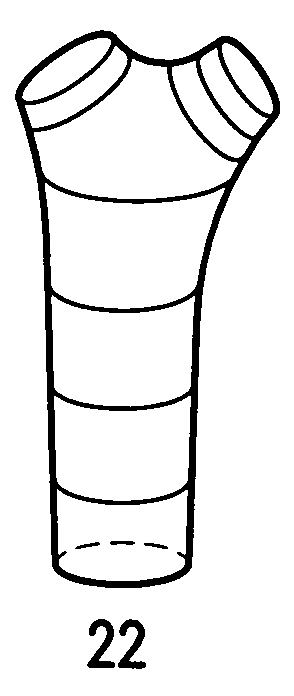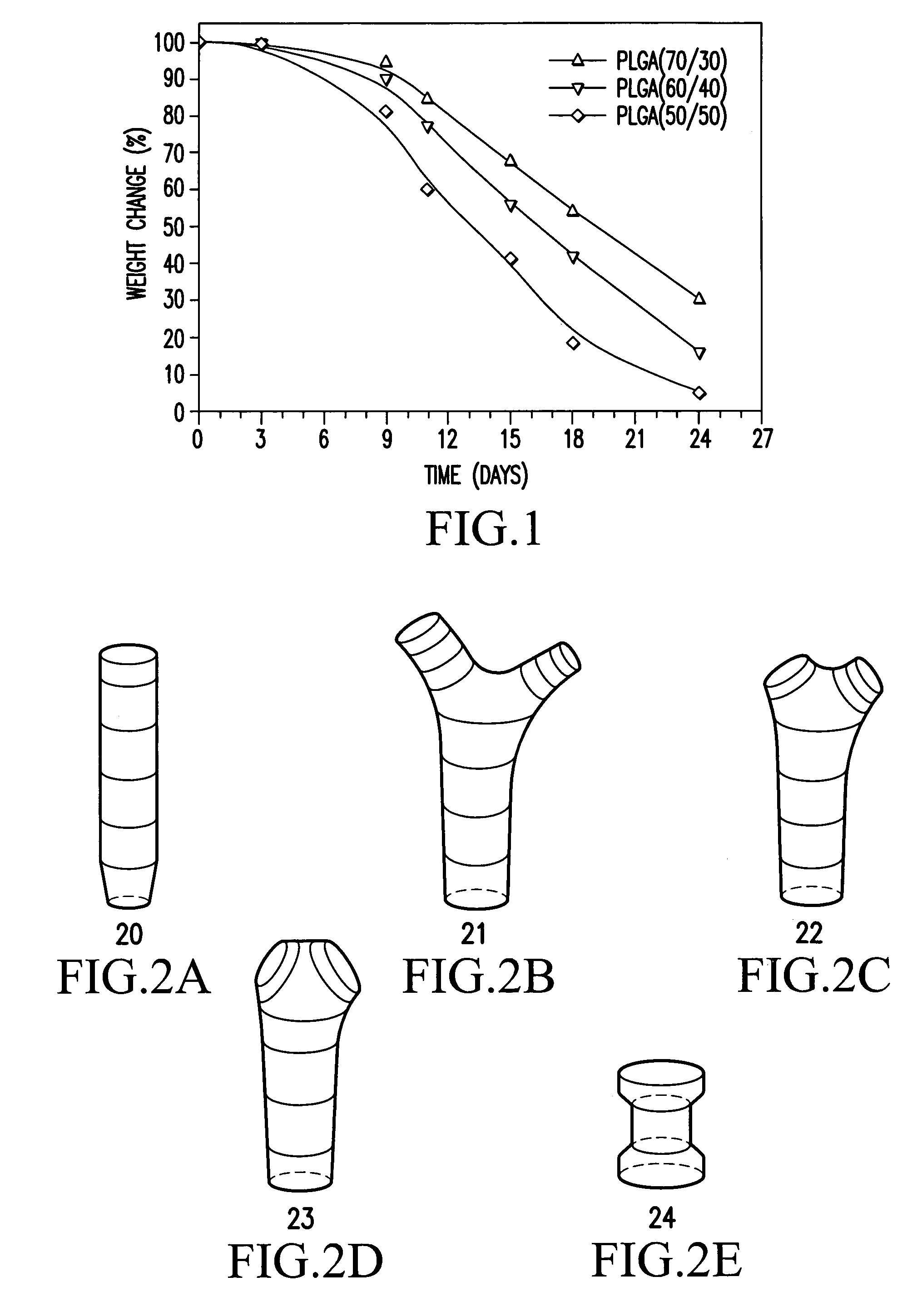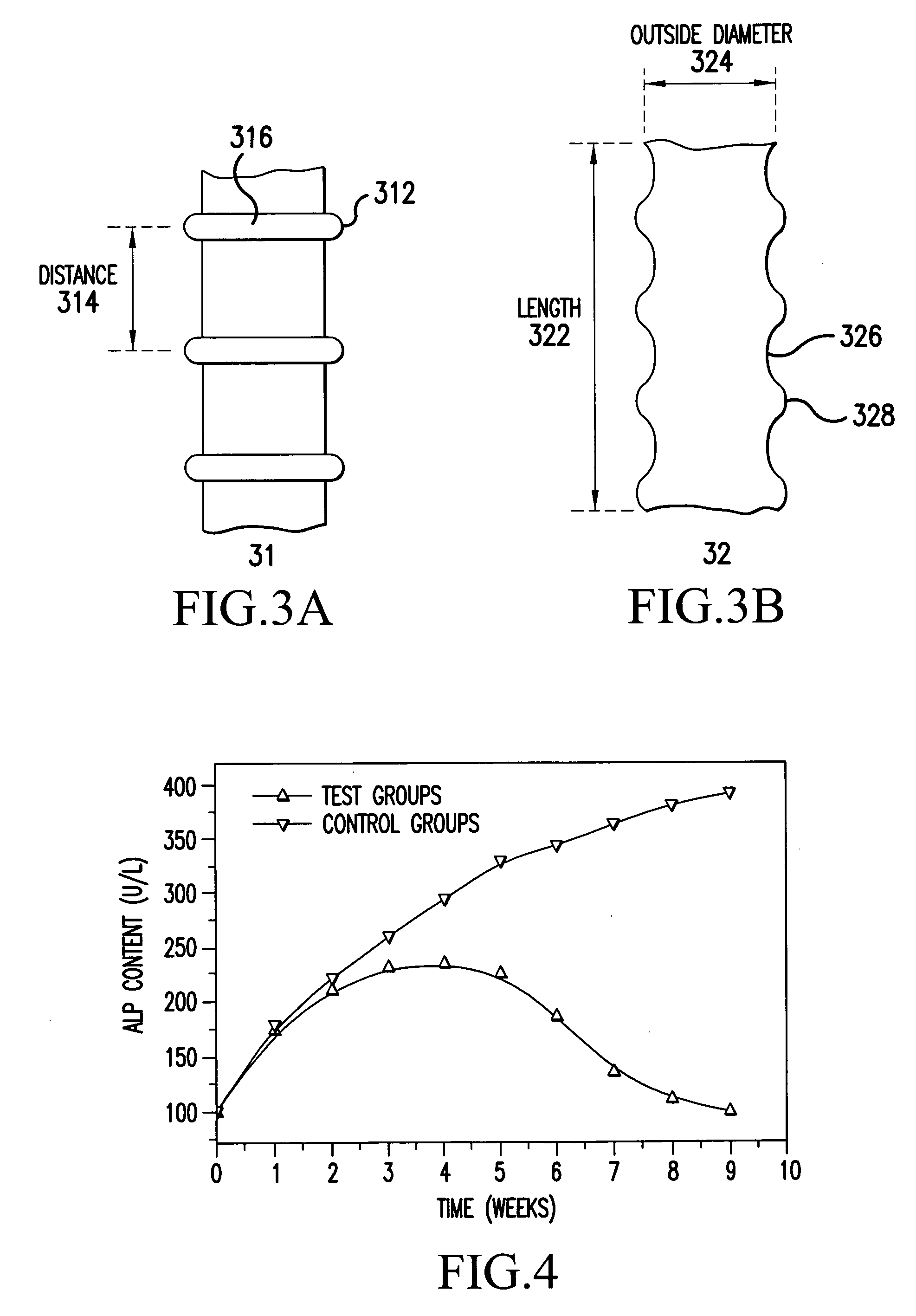Biodegradable common bile duct stent and the method for preparing thereof
a bile duct and biodegradable technology, applied in the field of cbd stents, can solve the problems of swollen and narrowed bile, acid-base imbalance, water-electrolyte disorders, etc., and achieve the effects of convenient suture operation, free draining of bile, and avoiding bile leakag
- Summary
- Abstract
- Description
- Claims
- Application Information
AI Technical Summary
Benefits of technology
Problems solved by technology
Method used
Image
Examples
examples
[0036]The results of animal experiments are given as follows.
[0037]The stent of the present embodiment was made of PLGA copolymer of L-lactide (LA) and glycolide (GA) with a molecular weight of about 120,000 and an LA / GA ratio of 70 / 30, which was synthesized by the Changchun Institute of Applied Chemistry. The polymer was extruded with a Model XSS-300 extruder (f20 mm, L / D=25) to give thin tubes with an outer diameter of 1.0 mm and an inner diameter of 0.6 mm. The thin tube was cut into stents about 5.5 mm in length and two ends were slightly modified so as to make the ends slightly smaller and smoother in cross-section. The stents made in this way were then sterilized and packed ready for use.
[0038]110 Wistar rats are selected and divided into a control group and a test group. Explorations were carried out on the CBDs of the both groups, longitudinal incisions approximately 2 mm long were sutured with 11-0 nylon thread with a 0.4–0.5 mm interval. For control group, the incision was...
PUM
| Property | Measurement | Unit |
|---|---|---|
| height | aaaaa | aaaaa |
| width | aaaaa | aaaaa |
| width | aaaaa | aaaaa |
Abstract
Description
Claims
Application Information
 Login to View More
Login to View More - R&D
- Intellectual Property
- Life Sciences
- Materials
- Tech Scout
- Unparalleled Data Quality
- Higher Quality Content
- 60% Fewer Hallucinations
Browse by: Latest US Patents, China's latest patents, Technical Efficacy Thesaurus, Application Domain, Technology Topic, Popular Technical Reports.
© 2025 PatSnap. All rights reserved.Legal|Privacy policy|Modern Slavery Act Transparency Statement|Sitemap|About US| Contact US: help@patsnap.com



